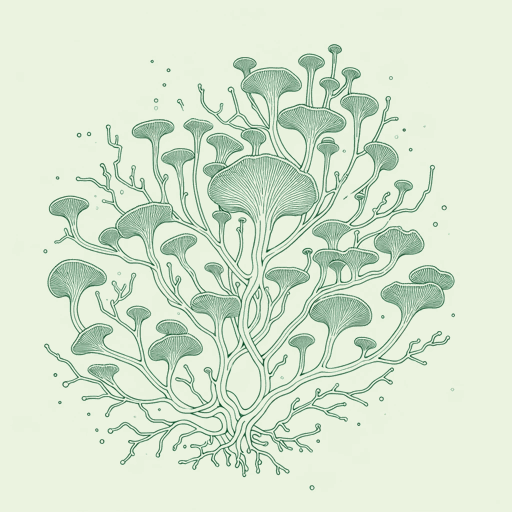44 pages • 1 hour read
Merlin SheldrakeEntangled Life: How Fungi Make Our Worlds, Change Our Minds & Shape Our Futures
Nonfiction | Book | Adult | Published in 2020A modern alternative to SparkNotes and CliffsNotes, SuperSummary offers high-quality Study Guides with detailed chapter summaries and analysis of major themes, characters, and more.
Themes
Fungi’s Role in Evolution and Biodiversity
Fungi were one of the first life forms to appear on land. The first fungi likely grew as gigantic, tree-like prototaxites, which dominated Earth for over 40 million years before green algae emerged from the shallow seas and began to colonize the Earth’s surface. These green algae are the ancestors of all plants, but they would not have successfully survived without the help of fungal partners.
Fungi-plant partnerships take many forms. Fungi, bacteria, and algae can combine into lichens, which have existed for millions of years across huge swaths of the planet. Lichens can survive in extreme conditions and are often the only life forms found where others could not possibly grow. Mycorrhizal relationships, in which fungi inhabit the roots of land plants, began to occur as soon as roots appeared. These partnerships are beneficial to both plants and fungi, and form the basis for the huge underground networks known as the “wood wide web.” Roots themselves would likely not exist without fungi. Fungi’s ability to decompose nearly any organic structure created soil—a substance that the vast majority of root systems depend on for nutrients and stability. The ancient cooperation between plants and fungi likely guided the way that plants developed and allowed for the vast biodiversity seen throughout Earth’s history.
Featured Collections
Appearance Versus Reality
View Collection
Climate Change Reads
View Collection
Creative Nonfiction
View Collection
Earth Day
View Collection
New York Times Best Sellers
View Collection
Popular Book Club Picks
View Collection
Science & Nature
View Collection
SuperSummary Staff Picks
View Collection
YA Nonfiction
View Collection

